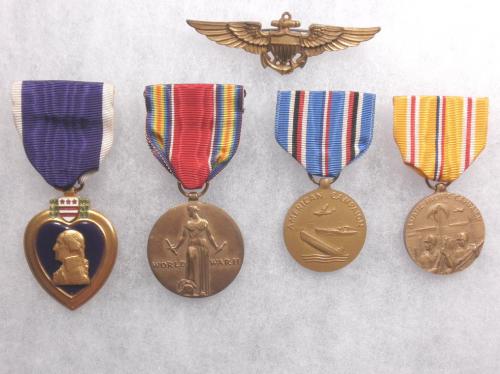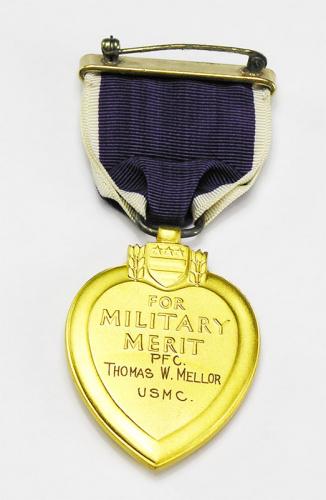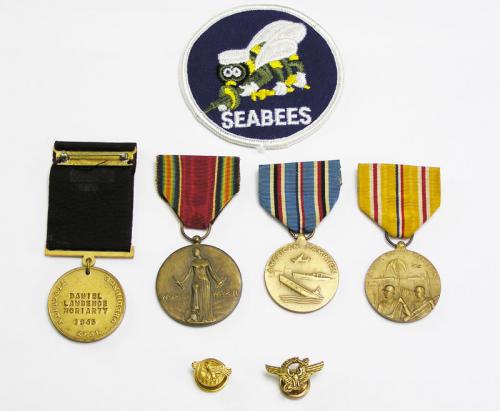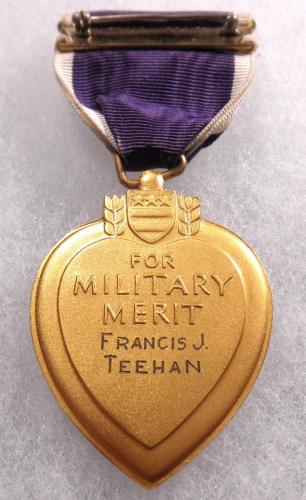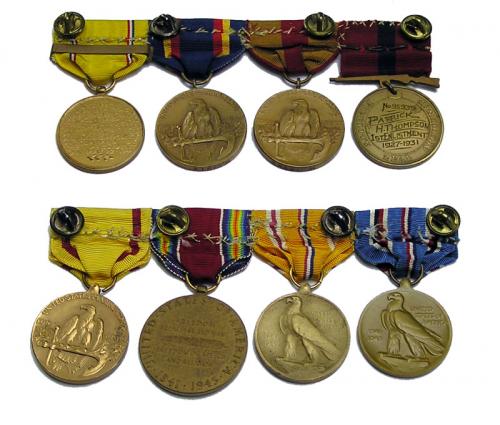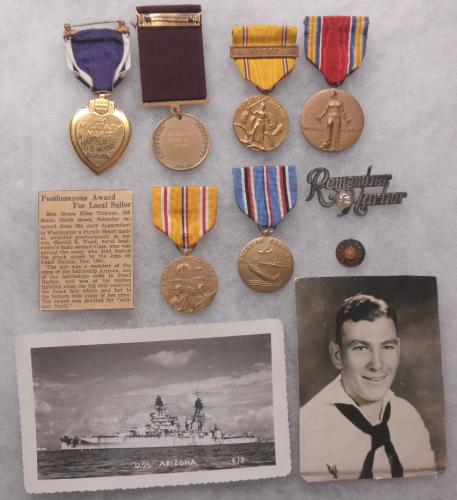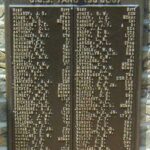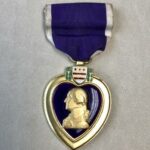Walter Junior Clark was born on August 27, 1924 in Carmichaels, Pennsylvania to his parents, Walter and Mary. Mary, who was 8 years older than Walter, died February 10, 1929, and his father re-married. He had 2 brothers and 5 sisters including those born after his father re-married. One of his brothers, Arlie was killed in action in Germany on October 9, 1944 at age 21 as a PFC in the 39th Infantry, 9th Infantry. He had been wounded at least twice previously. There is some confusion about Walter's name. He can be found as the name above or as Walter Clark, Junior. It is concluded that the “Junior” was his middle name based on Navy records.
Walter enlisted in the Navy on April 23, 1943 in Pittsburgh. After basic training, he transferred to the sub base in New London on December 31, 1943; thence to Navy Base 128 on June 9, 1944; thence to USS Plunger on August 22, 1944. He was transferred to the USS Tang on September 18, 1944. Walter went on USS Tang's fifth and final patrol starting September 25, 1944, just 6 days after reporting aboard. Tang was commanded by Richard H. O'Kane.
QM3 Walter Clark's group includes his officially engraved posthumous solid brooch Navy Type 2 Purple Heart and its short titled Purple Heart presentation case; plus his National Archives file, and internet research.
On her second major action on the fifth patrol, Tang made contact with a large Japanese convoy on 23 October.
She closed three ships in a night surface attack, two of her torpedoes hitting the closest, one more hit the second, and two more blasted the stern of the farthest ship. While lining up her stern tubes on a tanker, Tang had to maneuver quickly to avoid a transport, which was attempting to ram. Since the tanker was also trying to ram, the transport's efforts backfired, and she ended up ramming the tanker instead. Tang fired her four stern tubes at 400 yards, and the tanker sank. As Tang raced away to avoid the escorts the transport exploded.
The next evening, Tang found another convoy. She fired six torpedoes at three targets. Running parallel to the convoy while picking another target, she fired her stern tubes at another transport and tanker. The tanker blew up and a hit was observed on the transport. A destroyer, which had come around the tanker's stern, also blew up. The transport remained afloat, but was dead in the water.
Returning after hauling off to avoid a counter attack, Tang fired her last two torpedoes at the tanker. The last torpedo was defective and began a circular run. Tang put on full emergency power and maneuvered to evade, but the torpedo returned and struck her aft. O'Kane and eight others went into the water. Five more used their Momsen Lung escape gear to get to the surface from the sunken submarine. By morning, only nine, including O'Kane, were still alive to be picked up and imprisoned by the Japanese. They spent the rest of the war as prisoners.
Dick O'Kane received the Medal of Honor for this action. His citation reads:
For conspicuous gallantry and intrepidity at the risk of his life above and beyond the call of duty as commanding officer of the USS Tang operating against two enemy Japanese convoys on 23 and 24 October 1944, during her fifth and last war patrol. Boldly maneuvering on the surface into the midst of a heavily escorted convoy, Cmdr. O'Kane stood in the fusillade of bullets and shells from all directions to launch smashing hits on three tankers, coolly swung his ship to fire at a freighter and, in a split second decision, shot out of the path of an onrushing transport, missing it by inches. Boxed in by blazing tankers, a freighter, transport and several destroyers, he blasted two of the targets with his remaining torpedoes and, with pyrotechnics bursting on all sides, cleared the area. Twenty four hours later he again made contact with a heavily escorted convoy steaming to support the Leyte campaign with reinforcements and supplies and with crated planes piled high on each unit. In defiance of the enemy's relentless fire, he closed the concentration of ship and in quick succession sent two torpedoes each into the first and second transports and an adjacent tanker, finding his mark with each torpedo in a series of violent explosions at less than 1,000 yard range. With ships bearing down on all sides, he charged the enemy at high speed, exploding the tanker in a burst of flame, smashing the transport dead on the water, and blasting the destroyer with a mighty roar which rocked the Tang from stem to stern. Expending his last two torpedoes into the remnants of a once powerful convoy before his own ship went down, Cmdr. O'Kane aided by his gallant command, achieved an illustrious record of heroism in combat, enhancing the finest traditions of the U.S. Naval Service.
SOLD to a collector 04-2021

